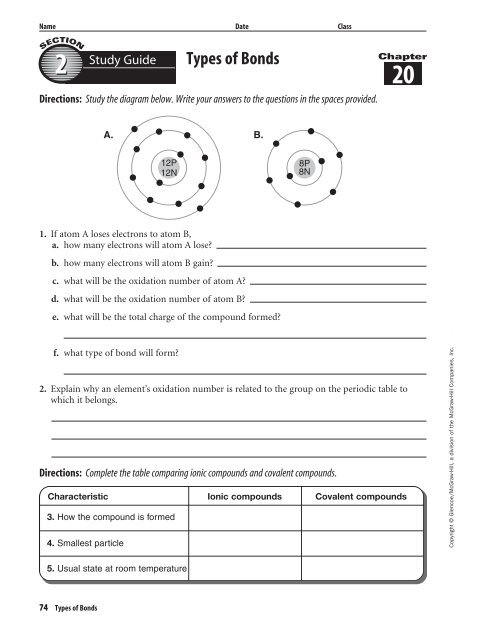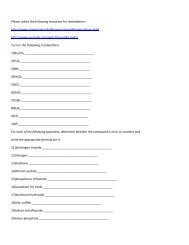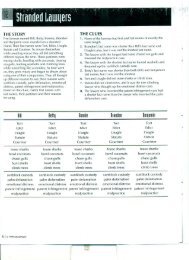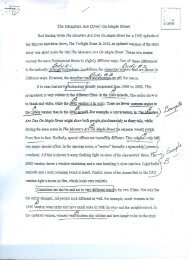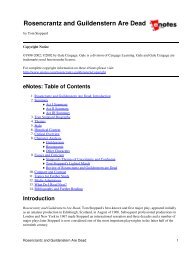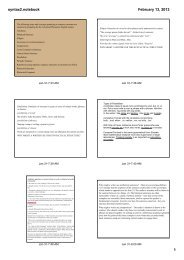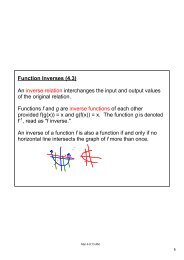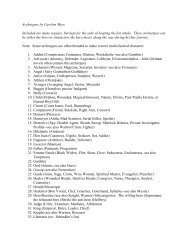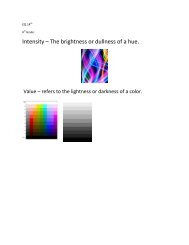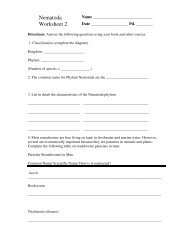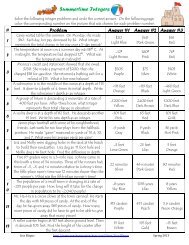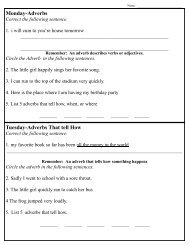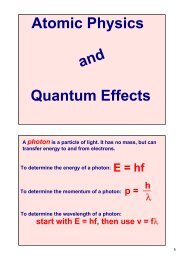Create successful ePaper yourself
Turn your PDF publications into a flip-book with our unique Google optimized e-Paper software.
Name Date Class<br />
2<br />
74 Types of Bonds<br />
<strong>Study</strong> Guide<br />
Types of Bonds<br />
Directions: <strong>Study</strong> the diagram below. Write your answers to the questions in the spaces provided.<br />
A. B.<br />
12P<br />
12N<br />
1. If atom A loses electrons to atom B,<br />
a. how many electrons will atom A lose?<br />
b. how many electrons will atom B gain?<br />
c. what will be the oxidation number of atom A?<br />
d. what will be the oxidation number of atom B?<br />
e. what will be the total charge of the compound formed?<br />
f. what type of bond will form?<br />
8P<br />
8N<br />
Chapter<br />
20<br />
2. Explain why an element’s oxidation number is related to the group on the periodic table to<br />
which it belongs.<br />
Directions: Complete the table comparing ionic compounds and covalent compounds.<br />
Characteristic Ionic compounds Covalent compounds<br />
3. How the compound is formed<br />
4. Smallest particle<br />
5. Usual state at room temperature<br />
Copyright © Glencoe/McGraw-Hill, a division of the McGraw-Hill Companies, Inc.


